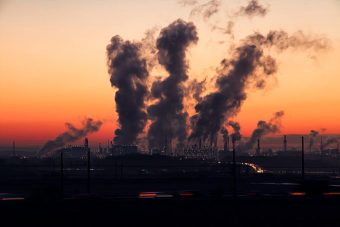
More than 95% of the world’s population in 2016 (+7 billion) lived in areas with dangerously high levels of air pollution — that is, in areas where WHO organization guidelines for air quality (themselves likely an underestimate) were exceeded. This is according to a new annual report from the Health Effects Institute (HEI).
The report also stated that: 58% of people around the world now live in areas where PM2.5 concentrations were above WHO Interim Target 1 (IT-1, 35 μg/m3); 85% lived in areas exceeding IT-3 (15 μg/m3); and 69% lived in areas exceeding IT-2 (25 μg/m3).
Furthermore, the new report — the State of Global Air 2018 — states that air pollution is far and away the top environmental cause of death worldwide. Relating to that, PM2.5 took 4.1 million lives in 2016 (through heart disease, lung disease, stroke, and respiratory infections); and ozone pollution took at least 234,000 lives in 2016 (via chronic lung disease).
Altogether, the air pollution related death figure for 2016 was 6.1 million. Which means that air pollution was responsible for more deaths than all other health-related causes except high blood pressure, diet, and smoking.
Notably, over half of the deaths attributed to air pollution globally in 2016 related to India and China — which collectively represent nearly half of the world’s population (~1.2 billion + ~1.5 billion). So, those two counties experienced a higher rate of air pollution related deaths than most others — unsurprising, considering the air pollution problems present there.
That said, the drivers in the two countries were different — with coal-fired power plants and industry being the main driver in China and biomass burning being the main driver in India. Also notable here is that China has somewhat reduced air pollution in recent years while India has experienced a large increase.
The President of HEI, Dan Greenbaum, commented on the news: “The Global Burden of Disease leads a growing worldwide consensus — among the WHO, World Bank, International Energy Agency and others — that air pollution poses a major global public health challenge. Nowhere is that risk more evident than in the developing world, where a third of the world’s population faces a double burden of indoor and outdoor air pollution.”
Other major factors (other than coal and biomass burning) in air pollution related deaths around the world include: internal combustion engine (ICE) vehicles; the shipping sector; the agricultural sector; and small-scale businesses + industry.
Source: cleantechnica.com


